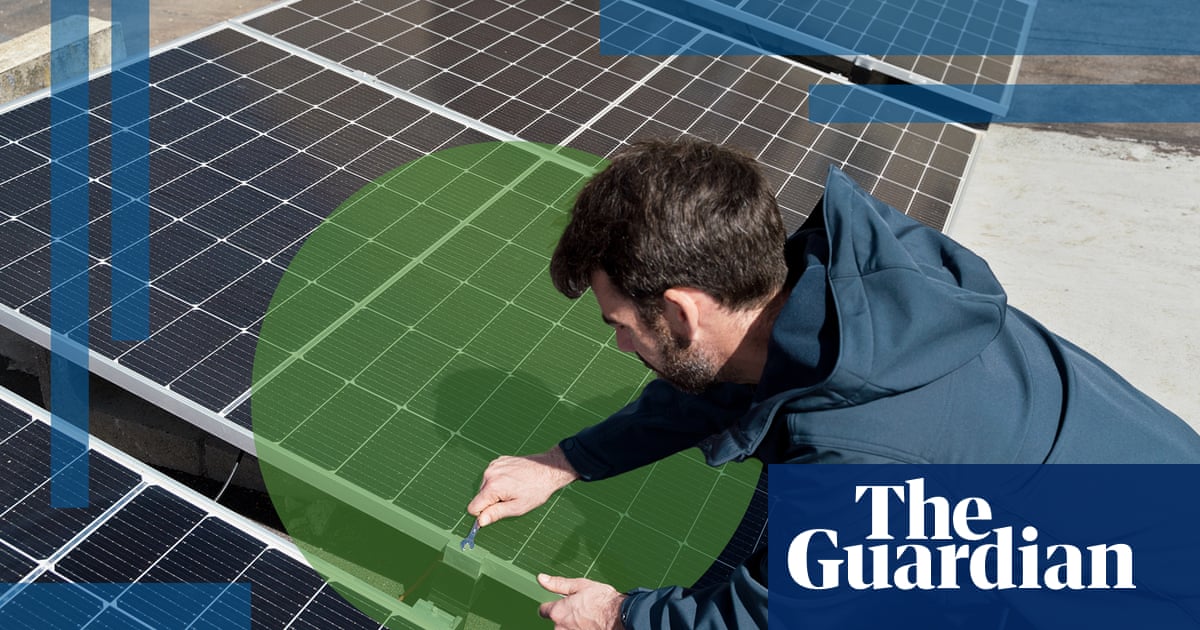Technically, solar panels have no expiry, but failing parts, changes in certification standards and a hunger for more kilowatts are seeing huge numbers of home solar systems meeting their fate earlier than they need to.
With limited onshore recycling options for solar panels, the waste generated is headed for a crisis point. While some upgrades are unavoidable, here’s how to decide if it’s really time to replace your current array.
How long should a solar array last?
Helen Oakey, the CEO of sustainability not-for-profit Renew, says for most household solar panels a good innings would be considered about 20 to 25 years (the length of most solar panel warranties). Oakey says panels will often outlast other components, such as inverters and cabling, and it is not unusual to replace inverters (which typically last about a decade) at least once during the lifetime of the panels. But with older systems, this is not always straightforward and the death of an inverter can sometimes trigger the need for a full upgrade.
Get the most out of what you’ve got
While solar panels themselves are fairly resilient, keeping them clean is important. Oakey recommends at least biannual cleaning and calling in the professionals if accessing the panels poses a safety risk. “Just like you might pay someone to clean your gutters, it’s worth the expense.” If you’re going to DIY it, it’s important to do it at a time of day when the panels are at their coolest, and to avoid using harsh chemicals.
Inverters and cabling are more susceptible to damage from environmental conditions and contaminants, Oakey says. “You don’t want to put in a solar system, ignore it, and then five years later wonder why it’s not working very well.”
Repair or replace?
Replacing faulty components is obviously the more sustainable option, but it is not always possible. Oakey points out that some older systems may only be compatible with inverters that have since gone out of code or production, likewise replacing solar panels may trigger a need for inverter and cabling upgrades.
She adds that if there is just one or two panels that have gone bust it is possible to have a technician disconnect them from the system to buy yourself some time before committing to a full upgrade.
Loss of efficiency and output over time is expected with solar panels, but Oakey says that as long as they are meeting your household energy requirements there is no need to replace them.
How to know when it’s time
While there is technically no expiry on solar systems, advancements in technology and changes in certification and safety codes mean that not all issues can be resolved with repairs. When your system was installed and what new certifications impact its components will ultimately make the decision for many consumers. As with any piece of equipment, when parts can no longer be replaced it is time to overhaul the lot.
Another reason would be if the energy provided by your system is no longer meeting your requirements. Oakey points out, though, that if you are yet to make your home as energy-efficient as possible (think insulation and double glazing), your resources would be best directed there before upgrading your solar.
What’s happening in the market?
The rapid advances in solar technology mean that while repairing older systems can be a challenge, when you replace them the upgrade is significant. Oakey says that someone who replaces an old 1.5 kilowatt system today could easily increase their kilowatt capacity sixfold.
She adds that as we reach a plateau in evolution, the market will likely stabilise and make it easier to maintain these newer systems without the need to replace them entirely. The uptake of newer micro inverters, where each panel operates as an isolated cell, means that any fail can be individually replaced without disrupting the whole unit.
“There’s going to be stabilisation, we’ll be able to sit on this next generation for a while,” Oakey says.
Things to consider
Solar trailblazers might be on very generous feed-in tariffs, but Oakey cautions that any changes to your current system will often void those agreements. “If you are interested in adding more panels to your system, you won’t be able to get the same feed-in tariff for additional panels because those schemes will have closed.”
If you’re sitting on an older 1.5kW system and getting a feed-in tariff of 50 cents per kW hour, Oakey says “you’re doing very nicely”. And that deal might be worth hanging on to for as long as possible.
Where do they go?
Thinking about the full life cycle of your system is an important sustainability consideration and the waste generated as older systems are replaced is enormous. While the options of what to do with solar panel waste are limited, innovative programs and a 12-year industry roadmap to deal with solar waste in Australia is due to commence next year. Another reason to hang on to your old system as long as possible.
∎